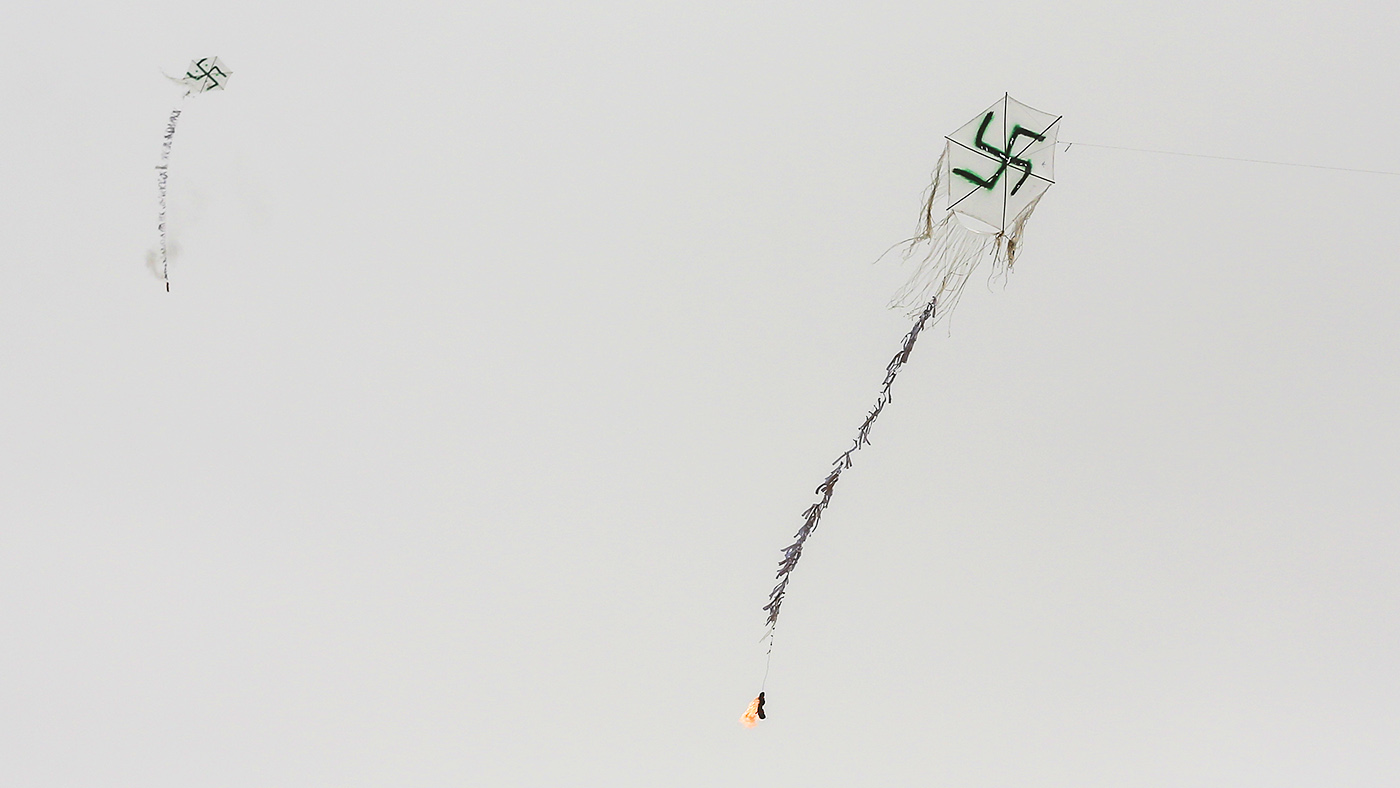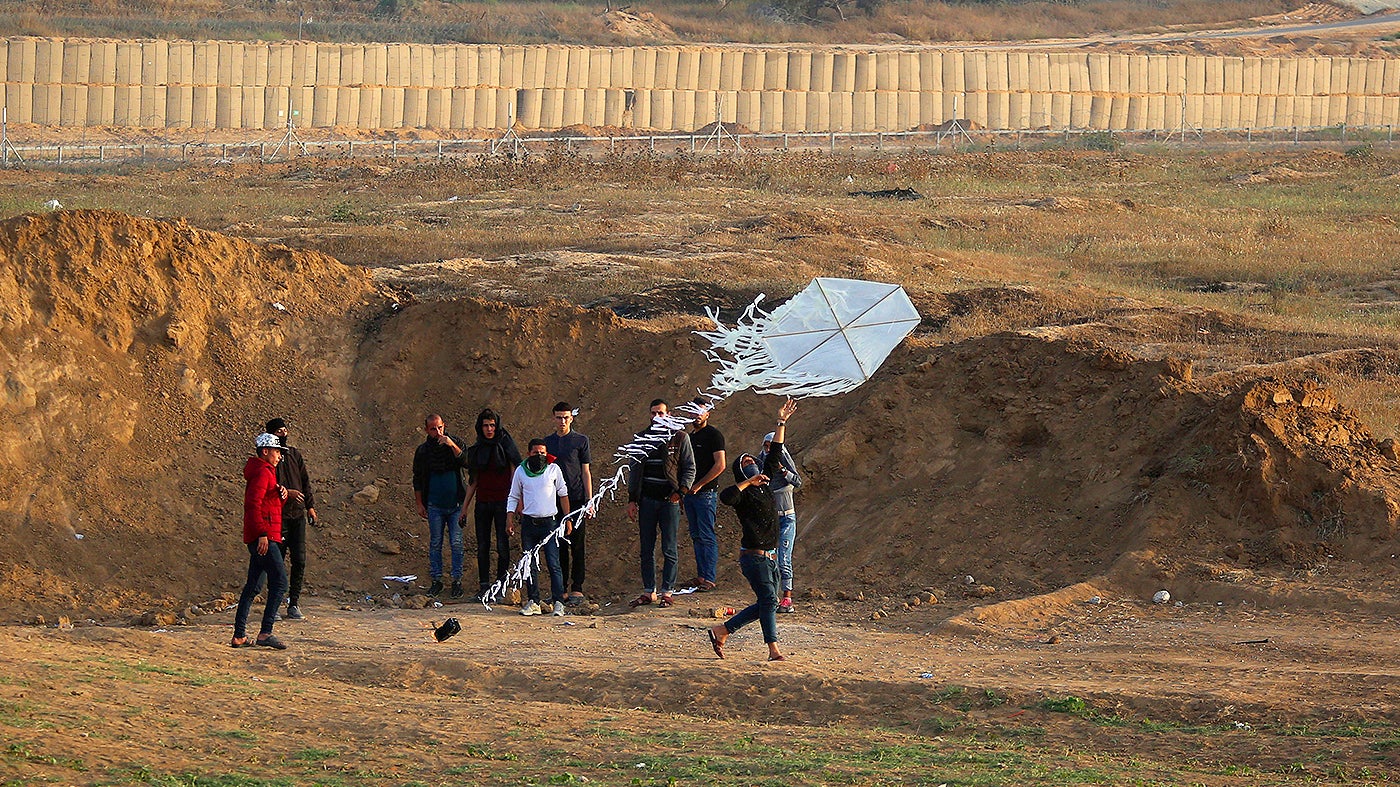As part of the latest flare-up (literally) in the never-ending Palestinian-Israel conflict, kites carrying incendiary payloads are being sent from the Gaza Strip into Israeli territory, setting off a scourge of highly destructive fires. One blaze in the Be’eri Forest has been particularly devastating. Agricultural lands have also been set on fire by the wind-carried improvised weapons in recent days. Launches of burning kites have coincided with a rash of violent protests near the border fences that separate Gaza from greater Israel. Referred to collectively as the “Great March Of Return,’ these demonstrations have turned deadly, with some reports stating that 7,000 Gazans have been injured and 45 killed as a result of skirmishes with Israeli forces.
The incendiary kites are especially problematic because they are incredibly easy to produce and rely on simple materials that are nearly impossible to embargo and/or interdict. What’s most concerning is that these improvised weapons are near impossible to shoot down, and even if they could be successfully engaged, their burning payloads will still land somewhere in Israeli territory.

Now it seems Israel Defense Forces are going to attempt to deter the launch of these kites in a similar fashion to how they deal with rocket barrages, by destroying the location of their origin. Earlier today, IAF aircraft struck a Hamas position near the border fence where incendiary kites were launched hours earlier. Israel is well equipped to identify and geolocate infrared events in the Gaza Strip as they have dealt with rocket launches from the territory for years. It is likely these same capabilities will now be adapted to finding and fixing targets where the flaming kites originate from.
Far from a new invention or general asymmetric warfare concept, incendiary kites can be as simple as a plastic and balsa wood kite-like device with a tin can filled with burning fuel attached to it via a long cord. Similar devices have been sent across the border sporadically over the years but they have become a much more persistent and organized threat in recent weeks. The fact that Israel is entering into another drought, with very dry conditions becoming a harsh reality, has made the kites a far more effective, albeit indiscriminate source of destruction than in the past.
Ynetnews.com quoted one local farmer as stating:
“At first we really did think it was a gimmick, some kind of joke—an incendiary kite—but it turns out we were wrong in a big way. This antiquated weapon is giving us serious trouble and causing heavy damages.”
Another farmer who saw his fields burn was quoted as saying:
“When you see a burning kite flying through the air, everyone is immediately on edge and stops working. Everyone tracks it to make sure it lands in an open field and not on our crops. It’s absurd… Sometimes you see several kites coming in quick succession.”
With no signs of the violence along the border receding and bolstered by the effectiveness of the tactic, the use incendiary kites is only likely to increase. Whether or not punitive air strikes will actually curtail their employment remains to be seen.
Contact the author: Tyler@thedrive.com
